A TOY box sits on a desk in the offices of the Gold Coast Child Protection Investigation Unit.
It’s a sturdy wooden box, adorned with painted rocket ships flying through space, in which a little boy put all his favourite toys.
It would have been his whole world.
The adventures conjured up by the four-year-old owner would have been an amazing insight into his young life – one that was horrifically cut short.
The toy box has been with police for almost 10 years since Tyrell Cobb was killed by his mother Heidi Strbak. The child suffered a fatal injury at some point in the days leading up to his death and died while in the care of her boyfriend, Michael Ian Anthony Scown.
Strbak had left her young son with Scown while she left the Biggera Waters home for hours. Scown called an ambulance about 9.30pm, 20 minutes after Strbak left, when Tyrell stopped breathing, before carrying his lifeless body to paramedics.
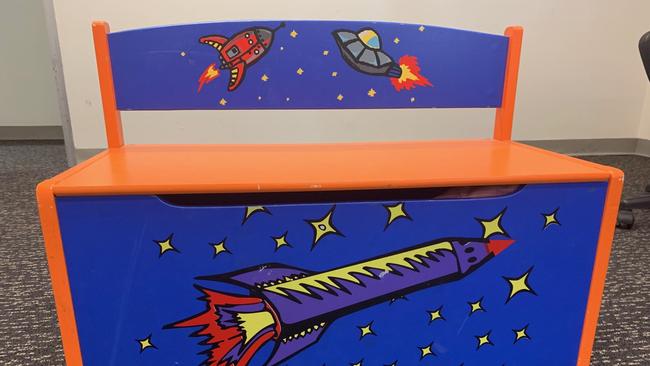
The toybox remains a heartbreaking reminder of a child denied a chance to experience what life could offer.
Tyrell would have been 14 now – maybe a young surfie kid, a footy star in the making, or a boy genius dreaming of being an astronaut like those flying the rocket ships on his toy box.
A life of possibilities was brutally cut short by those who were supposed to protect and care for him.
In the days leading up to his death in May 2009, the toy box would have scared him. He may have been too afraid to touch it.
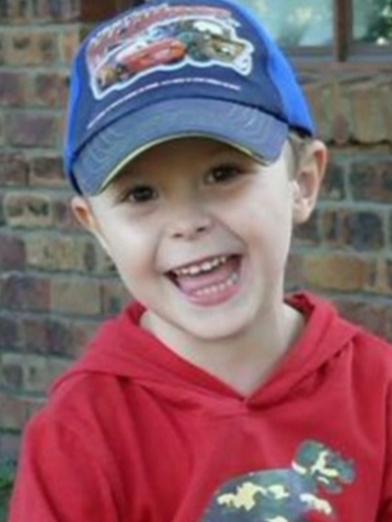
Claims were made that Tyrell cut his finger on the toy box and he was taken to hospital where he is given antibiotics for the wound. It was May 14, 2009.
Two days later his finger injury worsened and when he was taken to hospital for treatment, he had a broken finger.
It was claimed the toy box lid fell on his finger as he was pulling a toy from it, but this well loved toy box had a safety hinge on it that made the lid fall slowly.
Ten years later the lid still falls at a pace that would barely bruise, let alone break the finger of a small child.
Ten days after the cut finger, on May 24, 2009, little Tyrell was dead at just four years old.
It has been almost a decade since his death, but police officers working the case are still affected by it. Seasoned cops who have seen the darkest side of humanity say it is the worst case of child abuse they have seen.
And it is.
A scale is used to determine whether injuries sustained by a child are abuse or not.
It is called the Dunstan Scale. Injuries rated between 0 and 40 can be considered accidental, or just part of being a kid with bruised shins, cuts and scrapes. Anything over 40 raises concerns.
Little Tyrell Cobb, a small boy who loved the beach and going to kindy, had a Dunstan score of 268. He was literally covered in bruises, head to toe – injuries so horrendous that the Bulletin will not print their details.

THE INVESTIGATION
IT was not an easy road to convictions against Michael Ian Anthony Scown and Heidi Strbak.
Investigations took years after an initial murder charge against Scown was thrown out of court in 2009.
The officer in charge of the Gold Coast Child Protection Investigation Unit, Detective Senior Sergeant Troy Penrose, has been there through it all.
“The doctors’ initial evidence (in 2009) was that there was a time frame so short (in which Tyrell’s fatal blows were delivered) that it could have only been one person,” Det Sen-Sgt Penrose said.
“In the witness box at committal, that (time frame) was blown out, a number of people who could have potentially caused the harm, which went against the initial investigation.”
The case, which hinged on the medical evidence, was tossed at committal and Scown walked.
“There was hysteria around it at the time on all fronts, on the community and certainly on ours, because we had to backtrack then.
“That doubt, that evidence doesn’t go away, it stays part of the investigation and the brief forever and a day.”
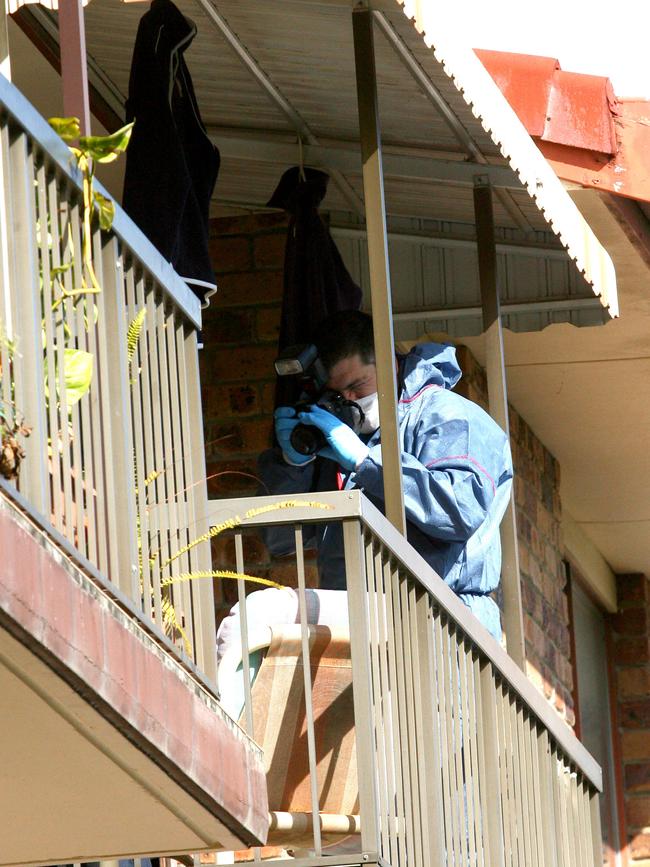
The Regional Crime Co-ordinator, Detective Superintendent Kerry Johnson, said detectives went back to the drawing board and started over.
“It’s not like a TV show where these things are solved in an hour,” he said.
“There was a full review and the detectives went out and sought more medical evidence.
“There were a number of experts.”
Det Sen-Sgt Penrose said they sought medical experts from not only Australia, but across the globe.
“Essentially what we were doing was trying to discredit our own initial expert, which sounds bizarre, but we had to source information from across the world to build a stronger medical brief that would override the reasonable doubt that someone else could have potentially hurt Tyrell.
“A lot of the stuff the pair had said to us was unreasonable. She (Strbak) was untrustworthy as a mother, right from the outset, she wouldn’t tell us where she was, wouldn’t tell us what she was doing.”
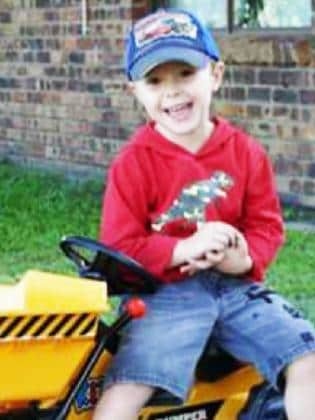
Through the further evidence gained, the window in which Tyrell received his injuries that would kill him widened, from three hours to between 36 hours and four days.
“That original doctor said that it was a blunt force and Tyrell died within three hours. Suddenly we have an expert setting out the timing of his death that showed he could have been saved,” Det Supt Johnson said.
“Basically it showed that a lay person would have known Tyrell was very sick and needed medical care. His injuries were treatable and the doctor said they were 100 per cent survivable if treated when the initial symptoms arose. He was denied medical treatment until it was too late.”
Det Sen-Sgt Penrose said the new evidence opened up the investigation and with this new timeline they could look at what Strbak had done, or more importantly not done to prevent Tyrell’s death.
“He would have been in excruciating pain over that time period. He was bleeding internally, he was dying and anyone should have picked that kid up and taken him to hospital.
“Even though medically it hasn’t changed the picture massively, but it put her back in the frame now.
“We engaged some non-conventional strategies that took a long time, a lot of effort and stuff was coming out of that.
“It became a bit of strategy of a bit of a divide and conquer type arrangement, and once we got them to turn on each other, that played out pretty well in court.”
The pair were arrested and charged with manslaughter.
“He, to assist himself, provided certain information to police through the courts, against her.
“It was enough to take new information to her, to charge her.
“She failed in her duty to do things to save him (Tyrell).”

COURT
SCOWN walked from court on October 10, 2017. He had pleaded guilty to manslaughter and sentenced to four years jail but after already spending two years and eight months in custody, was released immediately.
Justice Martin Burns found Scown was not responsible for the injuries to Tyrell, but had failed in his duty of care.
“You ought to have acted,” Justice Burns said.
“From the time of injury until death, every movement including breathing and vomiting would have caused extreme pain.
“The basis for your plea of guilty is an acceptance by you that you owed to Tyrell a duty of care.
“Your failure to obtain medical assistance for him renders you criminally negligent for his death.”
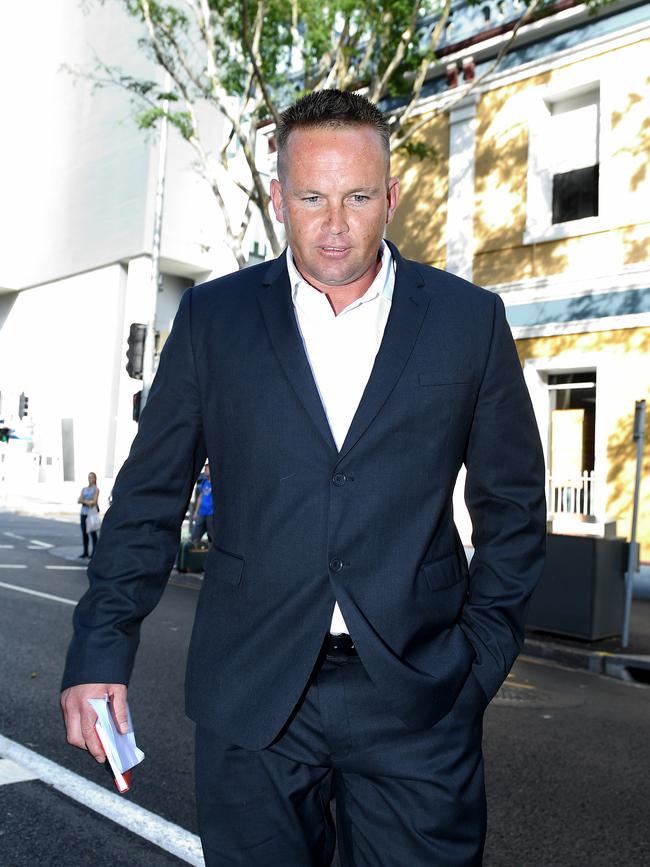
A month later Strbak fronted court, charged with manslaughter and accused of delivering the fatal blow that killed her son.
In court Strbak’s defence was that she did not deliver the blow that killed Tyrell; rather, that she failed as a mother to provide proper care while he was dying.
She pleaded guilty to manslaughter.
More than eight years after her son’s death, Heidi Strbak was found to have delivered the blow that killed her only child.
Justice Peter Applegarth found that she was the killer based on the balance of probabilities after hearing evidence she was aggressive towards Tyrell when angry and not sedated by cannabis.
“The prosecution … presents a compelling circumstantial case that Strbak inflicted serious injuries that weekend on her son, including the fatal injuries,” Justice Applegarth said.
“There is no compelling evidence that Scown inflicted the fatal injuries that weekend.”
In December 2017, Strbak was sentenced to nine years in jail for beating Tyrell to death. She will only have to serve four years before she will be eligible for parole.
Strbak failed in her attempt to appeal her sentence this week.
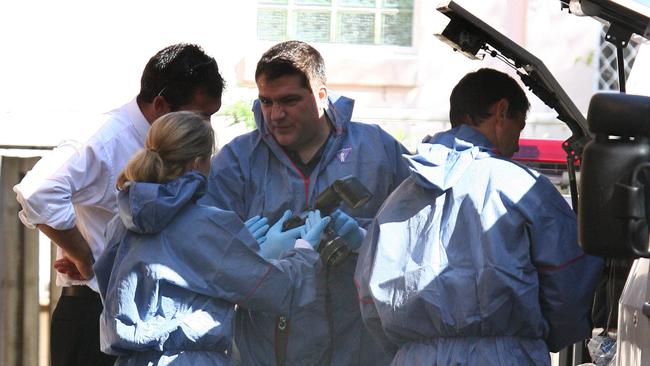
THE PEOPLE BEHIND THE INVESTIGATION
DETECTIVE Senior Sergeant Troy Penrose said after the initial action in court, with the case thrown out at committal in 2009, the CPIU banded together to get the investigation back on track.
“We went through a period of anger, then frustration, then a realisation that we now have got a massive job ahead of us,” he said.
“The community expect us to do it. It’s not like we can say, ‘oh well, we missed that one, we’ll put it away’.
“It was a big challenge for our unit to get past that frustration and anger.
“And then we remember. The Investigation Centre had pictures of Tyrell all over the place. It didn’t take much to look around and remember what we were doing this for.”
Many people worked on the case, from the initial crime scene in 2009 through to the sentencing of Scown and then of Strbak in 2018.

“It’s a credit to a lot of the guys in the office, a lot of people who worked on the investigation have left and gone to other areas, but some are still around.
“The investigation was done by the CPIU, but with extensive assistance from homicide. One of the lead investigators is out Rockhampton way.
“There were a lot of guys that stepped in for months at a time who progressed the case inch by inch, and kept positioning it forward.
“The key was about keeping traction, keeping people on the case, because there was a period of time after that initial committal, where it died, it was sitting aside.
“And none of us would ever just let it sit by because that’s not what we’re about, but it did require a constant progression over barriers.
“The Investigation Centre dwindled down to two people for a long time. That’s all it needed.
“Those two were doing 15-page reports off of sourced documents, seeking approval to go interstate to interview medical people, and getting funding, and these processes are there for a reason, but they take time.
“It could take months to get one statement off a doctor, then there would be clarification.
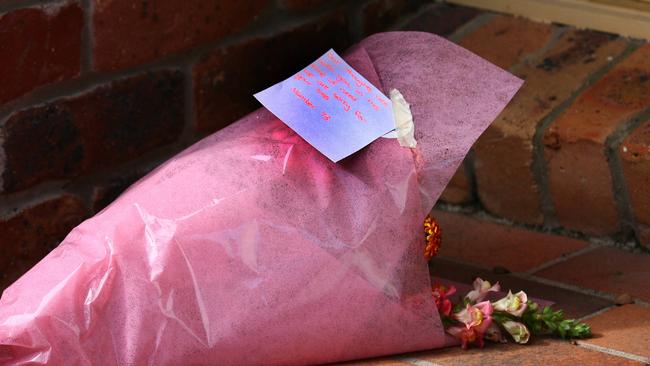
These guys would be flying all over the place. That’s the expectation by the way. No one gets a pat on the back for any of this.
“It was confronting. We had thoughts of would we ever get over the line with this, are we going to get anywhere with this?
“Keeping it going was a challenge for us. How far do we go? We were years in this. No one ever said put this away, it’s not going anywhere. Quite the opposite, we had to do something.”
He said it was difficult for officers working the case. All child deaths were confronting.
“It’s difficult for our people to go to a post mortem like that, it’s unnatural, it’s distressing … people get upset by it, a long time later.
“Dead kids are different, it’s something very unnatural.
“Apart from the brutality of a child homicide, it’s particularly more difficult to deal with when you know the people that are responsible for the care of that kid have caused this level of harm.”
Det Sen-Sgt Penrose said it was their job to protect children from harm and when they could not, to bring those who would harm them to justice.
“Those working in the child protection world are in it for the right reason. They have a fundamental feeling that they need to do something for kids, especially the ones that can’t protect themselves.”

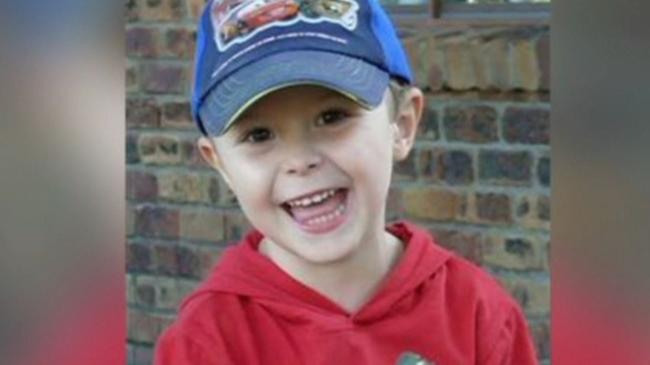
‘I still hope’: Falconio’s emotional dad breaks silence as killer has days to live
In a rare interview, the father of murdered British backpacker Peter Falconio tells of his pain amid reports killer Bradley John Murdoch is dying.
‘Terrifying’: Carl Williams’ ex-wife on Aussie shooting in Bali
The ex-wife of Melbourne underworld figure Carl Williams has spoken following an ambush hit on two Aussies in Bali, as police have provided an update about the gunmen involved.